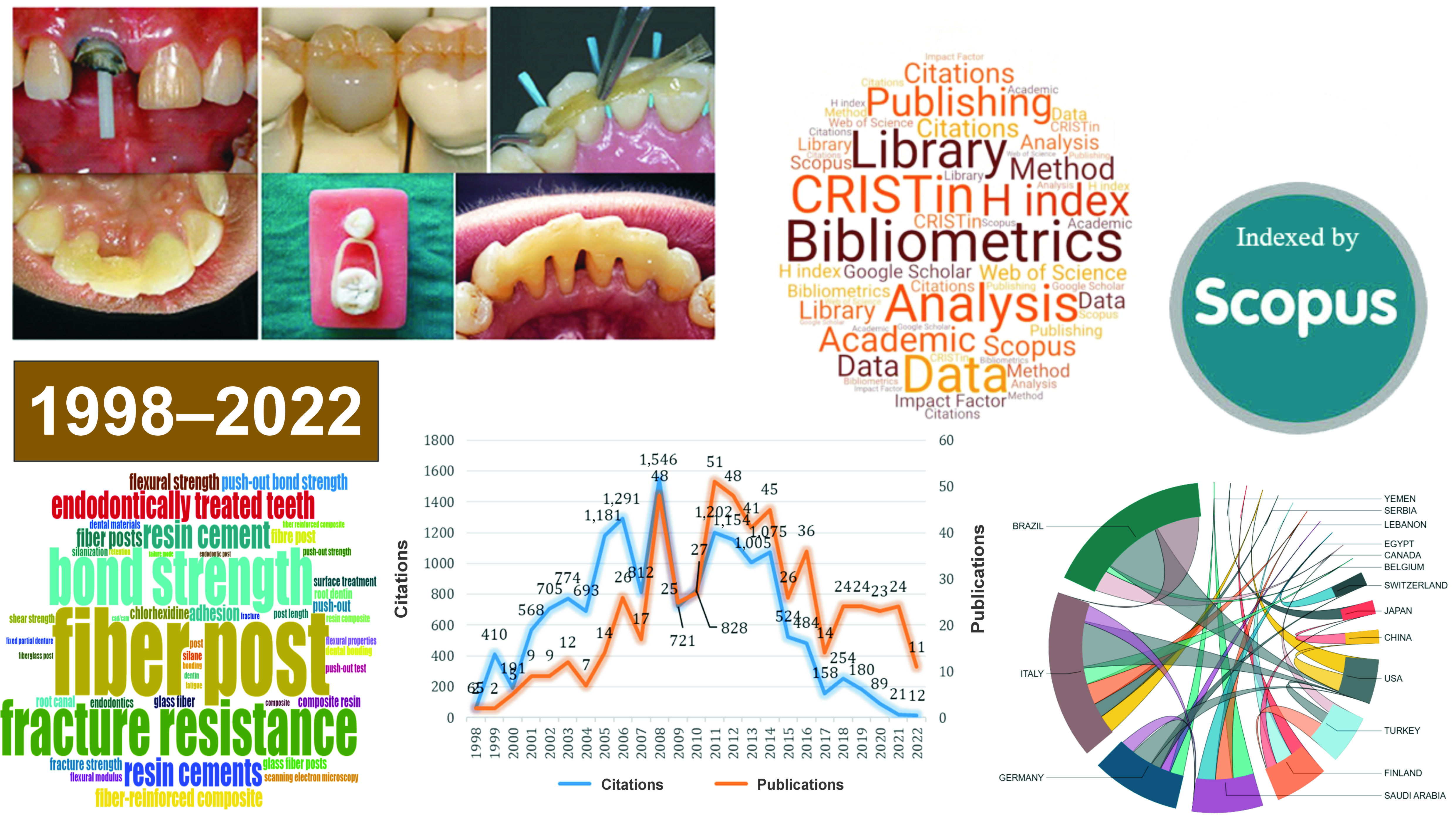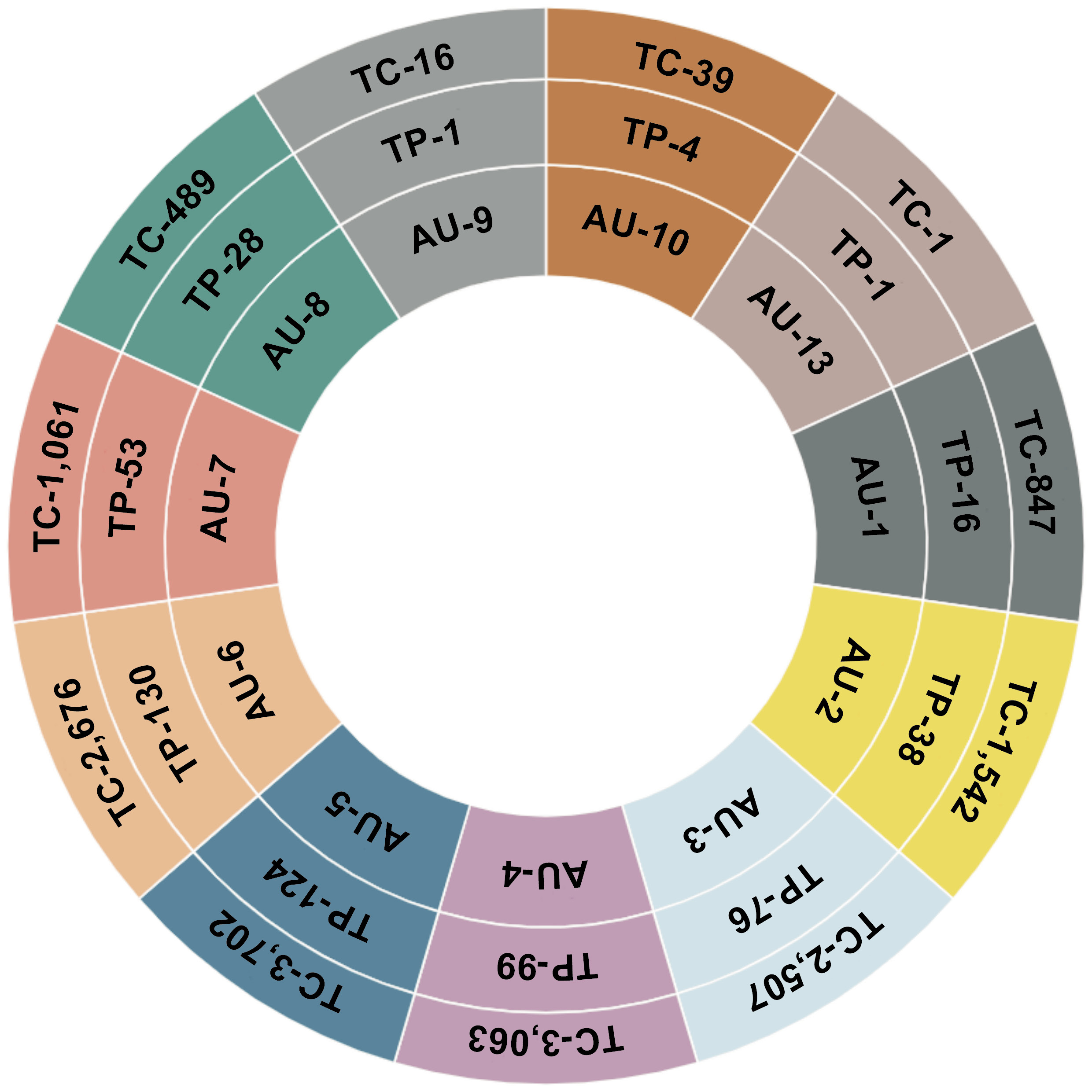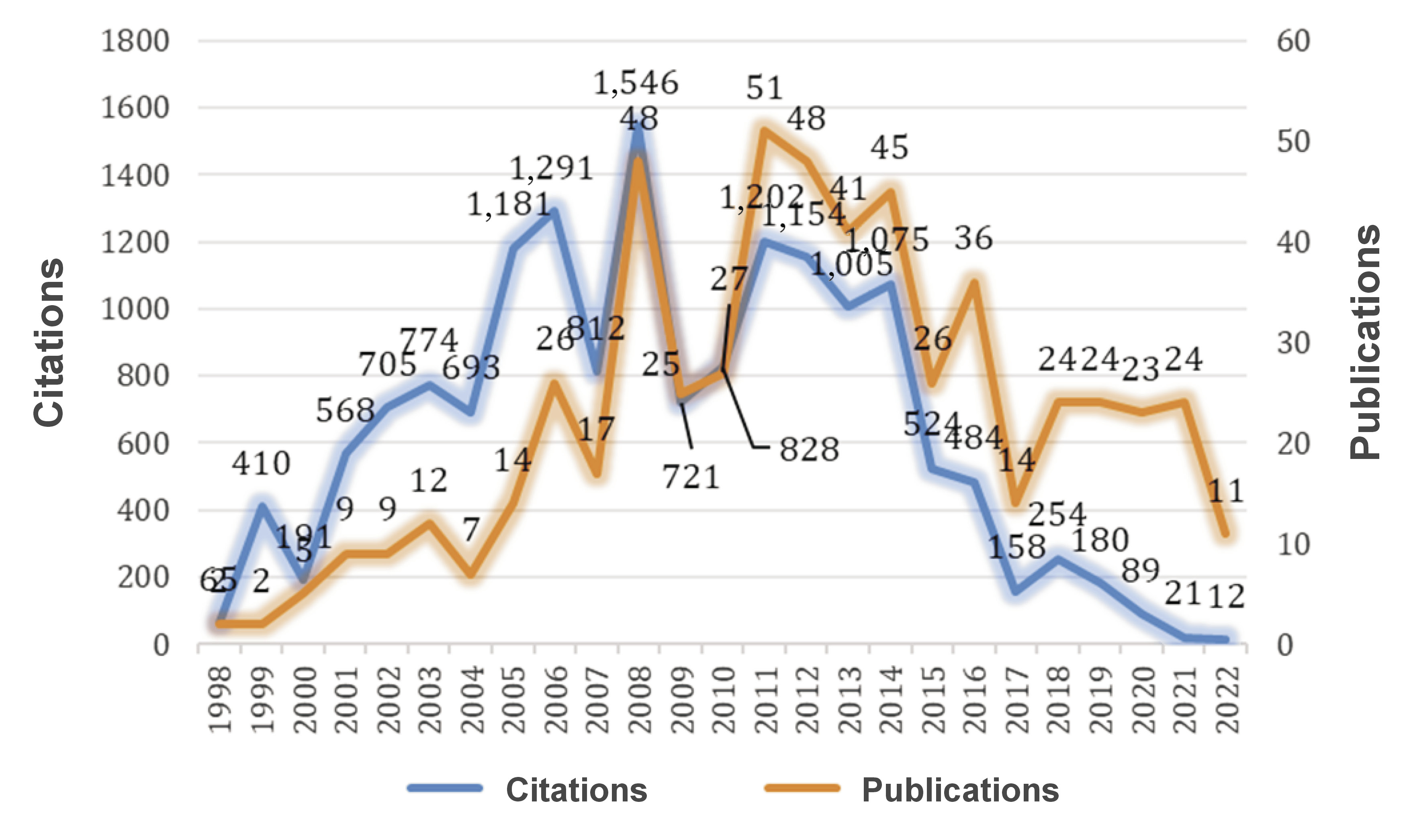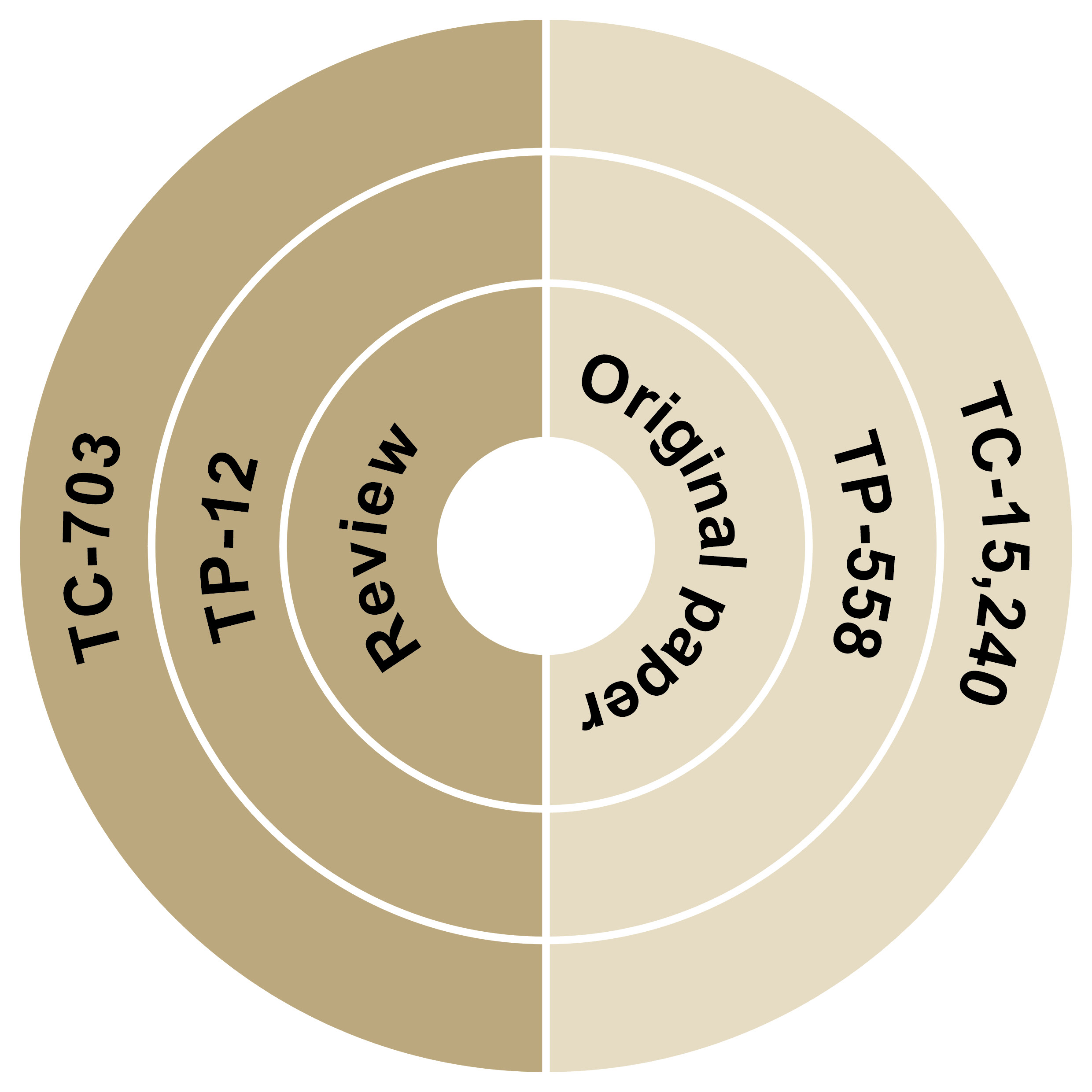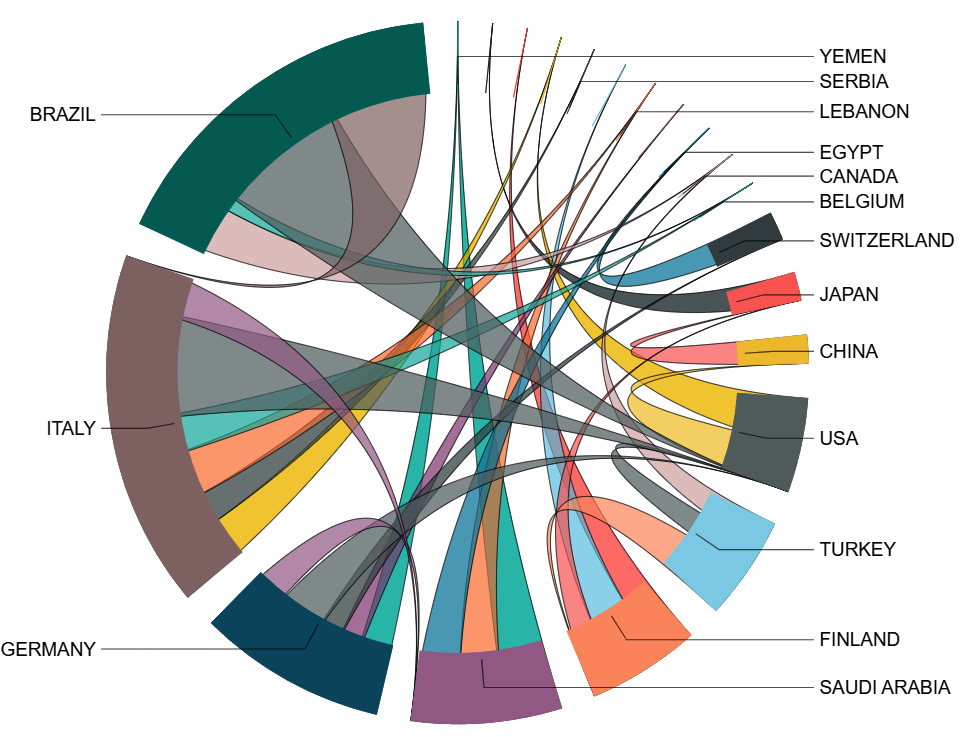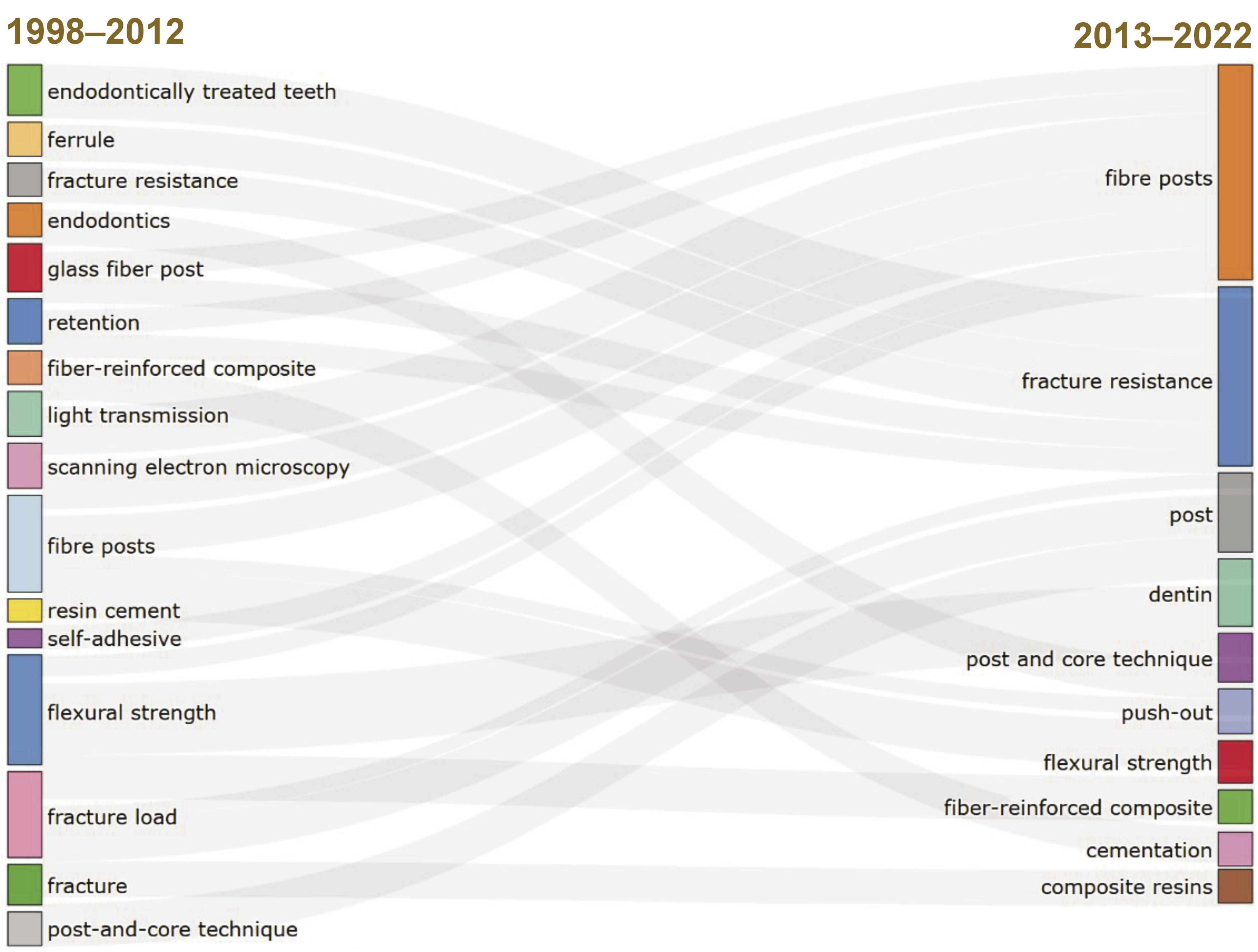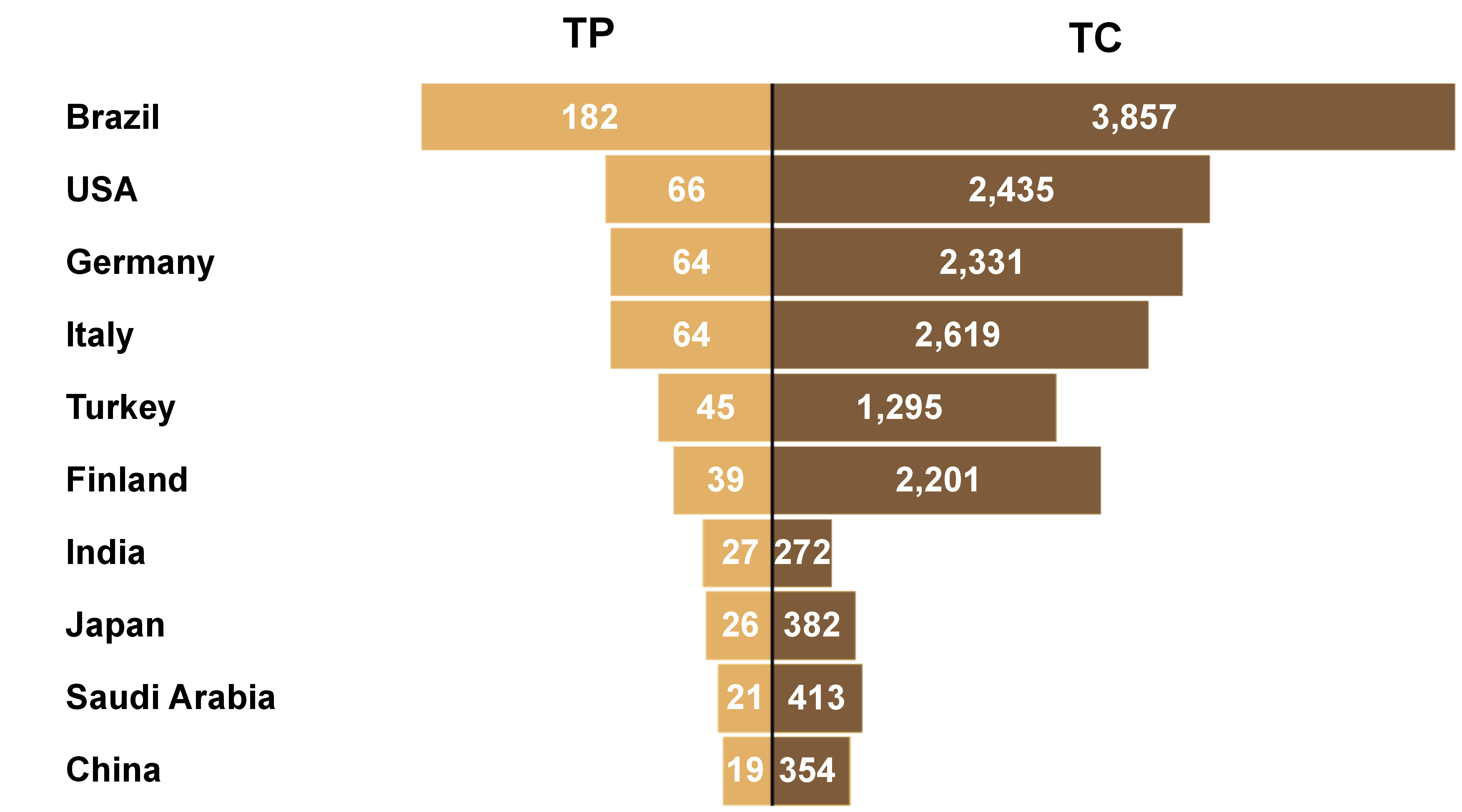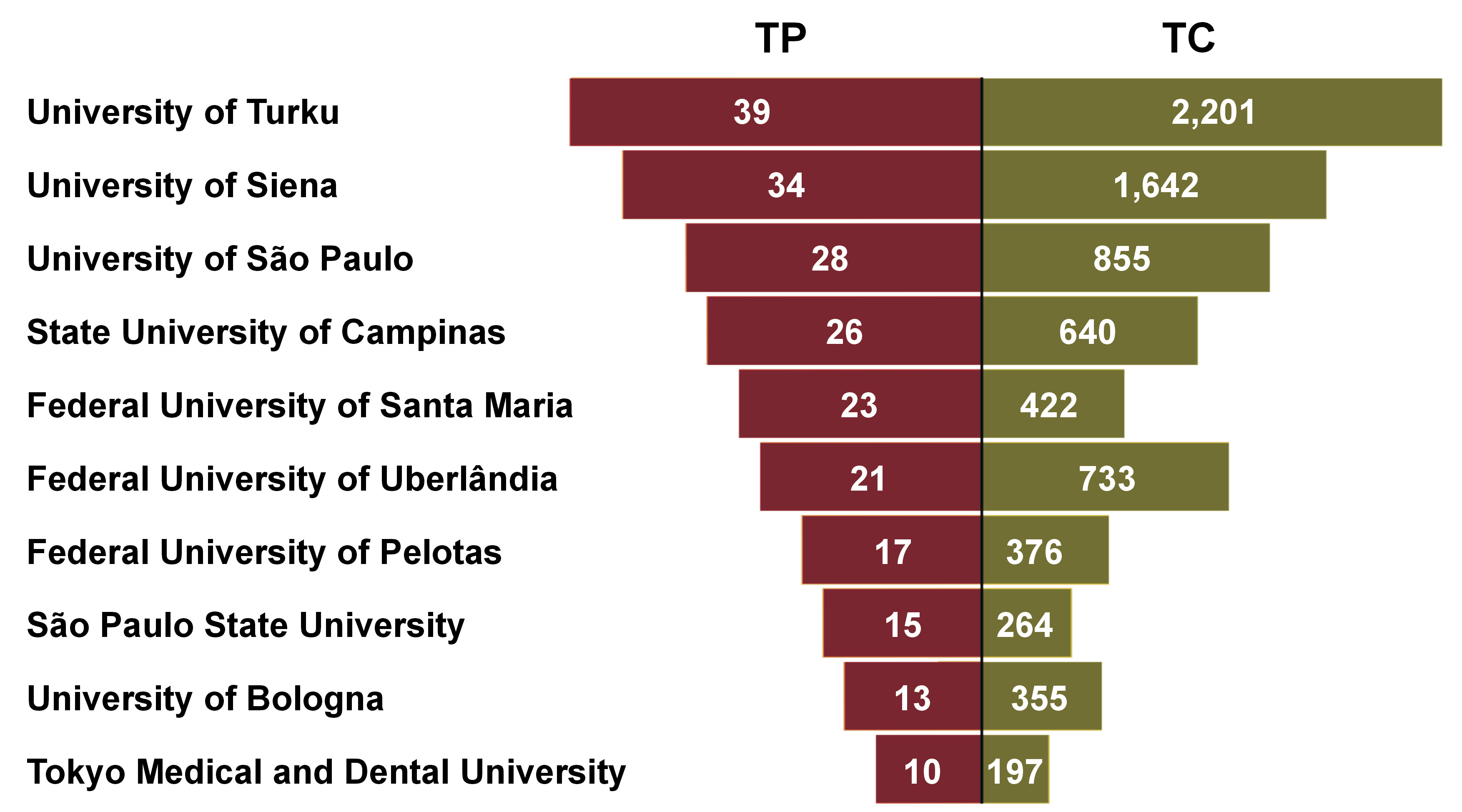Abstract
Over the last few years, considerable attention has been devoted to glass fiber-reinforced composites (GFRCs) in the field of dentistry. Glass fiber-reinforced composites are useful in prosthodontics, endodontics, restorative dentistry, orthodontics, and periodontics. This study considered various aspects related to GFRCs to assess the publications and citations on the subject from 1998 to 2022.
A bibliometric method of analysis was adopted to conduct the study. The relevant papers published within the established time frame were identified. A document-type filter was applied to retrieve only those results that were peer-reviewed. The most influential authors, journals, institutions, and countries were identified, as indicated by the number of citations, as well as the most frequently used keywords.
The findings of the bibliometric analysis revealed that the first article on GFRCs in the context of dentistry was published in 1998. The greatest number of papers on this subject was published in 2011 (n = 51), while the number of citations reached its peak in 2008 (n = 1,546). The University of Turku in Finland published the greatest number of articles, whereas Brazil was the most prolific country, producing the highest number of publications on dental fiber. Researchers from Brazil, Italy and Germany mainly collaborated with researchers from other countries, including the USA and Finland. The analysis revealed that publications of multiple authors were more likely to be cited.
Significant advancements have been made in the field of GFRCs, as demonstrated by an increased collaboration amongst different countries, organizations and investigators, which enhanced the development and progression of research related to GFRCs.
Keywords: bibliometric analysis, dentistry, biocompatible materials, glass fiber, glass fiber-reinforced polymers
Introduction
The use of fiber-based materials in biomedical applications is not a novel phenomenon. In the field of orthopedics, fiber-based materials are used in the fabrication of lower-limb prostheses,1 reconstruction of craniofacial bone defects,2 and implants.3 Among the different types of fibers, such as carbon, polyaramide and high molecular weight polyethylene, glass fiber-based materials have been used for biomedical applications due to their exceptional mechanical properties, lightweight characteristics, aesthetic appeal, and compatibility with the adjacent hard and soft tissues.4, 5, 6 Moreover, their compatibility with the polymer matrix makes them a suitable biomedical material.7, 8 For dental applications, glass fibers can be reinforced in acrylic-based polymers, such as poly(methyl methacrylate) (PMMA) and bisphenol A-glycidyl methacrylate (Bis-GMA). Additionally, both the tooth structure and the glass fiber-reinforced composite (GFRC) share analogous physical characteristics.9 Glass fiber-reinforced composites are widely used in various dental applications, including fixed partial dentures (FPDs), restorative and endodontic post systems, periodontal splints, and fixed orthodontic retainers.10 They were initially introduced as a reinforcement for denture base in the 1960s. Subsequently, several studies were conducted to assess the strength of GFRC,11, 12, 13 which is currently considered an effective enhancement of dental devices, including dental base polymers. The glass fibers showed superior results in strengthening the provisional partial dentures in comparison to other fiber types.14 Even in the modern era of dental implantology, a majority of patients opt for removable dentures to improve oral health-related quality of life.15 Therefore, glass fibers can be utilized for the repair and reinforcement of dentures. Thermoplastic GFRCs were effectively applied in the fabrication of bonded FPDs, with the material being indirectly fabricated in a laboratory setting prior to its intraoral use. Other advantages of using glass fiber in prosthetics include the minimum invasive preparation of the abutment teeth compared to metal-ceramic and all-ceramic FPDs,16 the lower incidence of allergic and toxic reactions associated with metal alloys, and the increased mechanical properties and time required for preparation. Glass fiber-reinforced composites are useful in aesthetic and metal-free dental and restorative applications.10 The introduction of such material allows scientists to tailor the composite material to meet the designer’s requirements and enhance its properties, thereby making it applicable to many areas of dentistry.17
The first non-metallic fiber endodontic post material was described in the early 1990s by Duret et al., who used the carbon-fiber reinforcement principle.18 However, in order to improve the aesthetic outcomes, composite materials were incorporated as the main component. The FRC post systems were introduced in 199719 to avoid root fractures due to their modulus of elasticity being analogous to that of the dentin substrate.20 The glass fiber posts were incorporated owing to their translucent appearance and strength.21 Several studies have been conducted to evaluate the mechanical properties of fiber-reinforced posts, which showed wide variability in their results, mainly due to the different materials used in their construction. In summary, the factors that affect the final mechanical properties are structural density and integrity, dimensions, fiber distribution, volume fraction, voids, and the internal bond between fiber and matrix.22, 23
The recently commercialized short glass fiber-based dental restorative composite (everX Posterior; GC Europe, Leuven, Belgium)24 is mainly used in the restoration of large cavities in vital and non-vital posterior teeth. The randomly oriented E-glass fibers and inorganic particulate fillers used in this material provide improved toughness of the polymer matrix. The incorporation of short E-glass fiber fillers resulted in an enhanced load-bearing capacity and improved flexural strength and fracture toughness of the dental composite resin, as compared to conventional particulate filler restorative composite resin.25 The inclusion of short fibers minimized the polymerization shrinkage stress and led to a decrease in marginal microleakage. Therefore, the positive results observed in the in vitro research that employed short glass fiber-based composite resin suggest its clinical use, as it is capable of fulfilling the requirements for ideal posterior restorations.26 Previous research has demonstrated that the use of the GFRC wire can yield superior results in terms of patient acceptance and structural integrity.27
Burstone and Kuhlberg described a novel clinical application of GFRCs by applying an aesthetic connecting bar for active tooth movement.28 This application was of significant importance due to the enhanced mechanical properties and fracture resistance under masticatory forces. In contrast, the rigid connection of teeth was considered a disadvantage, as it resulted in independent physiologic tooth movement during function. This subsequently led to the development of temporomandibular joint disorders, which can occur due to malocclusion.29 The debonding or fracturing of the composite-based splints occurred within a few weeks or months.30 These less rigid fiber-based composite retainers allowed for minimal tooth movements, which ultimately yielded unsatisfactory results. The recent introduction of glass fiber bundles (EverStick Ortho; Stick Tech Oy, Turku, Finland) that are pre-impregnated with a PMMA polymer has led to an improvement in the micromechanical and chemical adhesion of the splint.31
The inherent rigidity of the resins used in composite splints makes them susceptible to debonding failure. The reinforcement of the resin-based composites with glass fiber has shown promising results, enabling clinicians to replace metal wires and conventional resin composites as periodontal splints with more resilient and aesthetic solutions.32 Conservative and indirect prosthetic splinting have been readily available through the use of different types of commercial glass fiber splints, which also exhibit sufficient mechanical strength and facilitate the maintenance of proper oral hygiene.33 In recent years, there has been a notable increase in interest surrounding the use of GFRCs in dentistry, with numerous narrative and systematic review articles having been published on the subject.6, 10, 34 However, a critical analysis of these studies is essential to assess their impact on the direction of dental research. A bibliometric analysis is a method of evaluating the impact of a given scientific field. This approach has been applied to a variety of dental materials, including dental polymers,34 composites,35 adhesives,36 electrospun fibers in dentistry,37 and lithium disilicate.38 However, our study found no bibliographic study that quantitatively assessed GFRCs. The bibliographic studies provide detailed information about subdisciplines, facilitate the organization of a field of study, and identify connections between different disciplines. Furthermore, a bibliometric analysis enables the identification of topic clusters, literature gaps and academic silos, as well as the determination of the most impactful authors and their research. In contrast to narrative literature reviews, bibliographic literature reviews use quantitative and statistical methods to achieve this goal.39 Previous research has shown that bibliographic studies can lead to the identification of promising future research areas by identifying gaps in existing knowledge.40
Therefore, the aim of this study was to examine citation trends and publications in the field of GFRCs from 1998 to 2022. The other research questions addressed in this study are as follows:
– What is the pattern of authorship in the field of glass fiber research in dentistry?
– What is the extent of research conducted in the field of glass fiber research in dentistry, and how has it evolved over time?
– Which papers have been most frequently cited, and which document types are the most preferred in this field of research?
– Which authors have had the greatest influence on glass fiber research in dentistry?
– Which countries, institutions, publishers, journals, and funding agencies are the most prominent in this research area?
– Which countries and institutions are currently engaged in glass fiber research in dentistry?
– What are the key research areas and keywords in glass fiber research in dentistry?
Material and methods
Study design
The study was conducted using a bibliometric method of research analysis. This method is quantitative in nature and employs statistical tools to analyze the publications and citation trends across different fields of knowledge. Previous studies have adopted a similar bibliometric approach to map the research in their specific field.34, 41, 42
Data retrieval
The data was retrieved from the Scopus database, one of the largest indexing databases. The Scopus database was selected due to its comprehensive coverage of published scientific literature. A search strategy, accompanied by a set of inclusion and exclusion criteria, was adopted to retrieve the bibliographic records.
The following search query was carefully designed using the Boolean operators:
TITLE-ABS-KEY (“Glass fiber composite” AND “dentistry”) OR TITLE-ABS-KEY (“Glass fiber” AND “Dental Application”) OR TITLE-ABS-KEY (“Glass fiber” AND “Endodontic posts”) OR TITLE-ABS-KEY (“Glass fiber” AND “prosthodontics”) OR TITLE-ABS-KEY (“Glass fiber” AND “Fixed Prosthodontics”) OR TITLE-ABS-KEY (“Glass fiber” AND “crowns”) OR TITLE-ABS-KEY (“Glass Fiber” AND “orthodontics”) OR TITLE-ABS-KEY (“Glass fiber” AND “periodontology”) OR TITLE-ABS-KEY (“Glass Fiber” AND “Dental Splints”) OR TITLE-ABS-KEY (“Glass Fiber” AND “Core buildup”) OR TITLE-ABS-KEY (“Glass Fiber” AND “Dental Implants”) OR TITLE-ABS-KEY (“Glass Fiber” AND “Dental composites”) AND (LIMIT-TO (DOCTYPE, “ar”) OR LIMIT-TO (DOCTYPE, “re”) OR LIMIT-TO (DOCTYPE, “cp”) OR LIMIT-TO (DOCTYPE, “ch”)) AND (LIMIT-TO (SUBJAREA, “DENT”)).
Two of the investigators (SUR and SA) downloaded the data simultaneously to avoid any bias in data collection. The retrieved data was then matched, and any differences were discussed and resolved.
Eligibility criteria
A document-type filter was applied to retrieve solely the peer-reviewed results. Original papers, reviews, editorials, book chapters, and conference papers were included in the study. Documents that did not undergo the peer-review process were excluded.
Tools used
The data was analyzed and visualized using Microsoft Excel 2016 (Microsoft Corporation, Redmond, USA), biblioshiny (https://www.bibliometrix.org/home/index.php/layout/biblioshiny) and VOSviewer (https://www.vosviewer.com).
Results
Figure 1 illustrates the number of authors (AU) engaged in glass fiber research within the field of dentistry, along with their total number of publications (TP) and total number of citations (TC). The data indicates that researchers preferred to work collaboratively. Six- and five-author studies were the most common trend, respectively. The greatest number of studies were carried out through the collaboration of 6 authors (n = 130). The highest number of citations were received from the publications authored by 5 individuals (n = 3,702), followed by papers published by 4 authors (n = 3,063). Interestingly, the trend of publications exhibited a decline with an increase in the number of authors, such as 9 and 10. The number of citations received by publications authored by a single or 2 authors was relatively high, i.e., 847 and 1,542, respectively. The total number of publications for these authors was 16 and 38, respectively.
The line graph in Figure 2 illustrates the number of publications and citations in glass fiber research. The data reveals an asymmetrical growth of both publications and citations in the studied field. The first publication on the subject was released in 1998. The number of publications steadily increased until 2003. Subsequently, a non-linear behavior was observed until 2022. In 2011, the greatest number of publications was observed (n = 51), which reached its highest citation number in 2008 (n = 1,546). Papers published from 2017 to 2022 received a reasonable number of citations. For example, papers published in 2017, 2018 and 2019 received 158, 254 and 180 citations, respectively.
Table 1 presents a list of the 10 most highly cited papers,21, 27, 43, 44, 45, 46, 47, 48, 49, 50 accompanied by the names of their authors, the year of publication, the source of publication, TC, and the average number of citations per year. The paper published in 2002 by Akkayan and Gülmez received the highest number of citations, with a yearly average of 21.05 citations.43 The paper was published in the Journal of Prosthetic Dentistry. The findings showed that the most frequently cited papers were published between 1999 and 2005,21, 43, 44, 45, 46, 47, 49, 50 with the exception of 2 papers published in 201327 and 2014,48 which received 151 and 175 citations, respectively. The study by Sarkis-Onofre et al. exhibited the highest yearly average number of citations, namely 21.88 citations.48
Table 2 provides a list of the authors, along with the year of their first and most recent publications. Additionally, it provides the number of publications each author has contributed as a single author, first author, and in other capacities. The TP and TC values for these authors were tabulated. Vallittu PK was the most prolific author with 35 publications and 2,159 citations. Following Vallittu PK, Ferrari M contributed 32 publications and received 1,531 citations. Among the most prolific authors, Vallittu PK was responsible for 4 studies alone.
Figure 3 presents the TP and TC values for original papers and reviews. Original papers were the most prevalent form of publication, comprising approx. 98% of the research output. Reviews were the other prominent document type. Original papers received the highest share of total citations (n = 15,240), while reviews received the highest average number of citations per document (n = 58), outperforming all other document types.
Figure 4 shows the countries engaged in collaborative research related to glass fiber. Brazil, Italy and Germany demonstrated the greatest degree of collaboration in various studies related to dental fiber and other related areas. These 3 countries demonstrated a significant level of collaboration with the USA. With regard to the Arab region, Saudi Arabia had demonstrated the highest degree of collaboration (Figure 4). Among the countries of Finland, Turkey, the USA, China, and Japan, Finland and Turkey showed high inter-collaborative publication activity.
Table 3 lists the publishers with the highest number of publications. The TP, TC, and average citation per publication (TC/TP) for these publishers are presented. It was found that Mosby Inc. was the most prolific publisher, with 26 publications, followed by Elsevier Inc., with 21 publications. The highest number of citations per publication was recorded for these 2 publishers. The mean number of citations per document for these publishers was 35.
Table 4 lists the institutions that sponsored 4 or more studies. The TP funded by agencies, TC, and TC/TP are presented. The highest number of studies were funded by the Brazilian Federal Agency for Support and Evaluation of Graduate Education (CAPES) (n = 13). The publications financed by the Ministry of Science, Technology and Innovation of Brazil were cited with the best average of 67 citations per publication. The highest number of citations were received by the publications funded by the National Council for Scientific and Technological Development (CNPq) (n = 404).
The word cloud shown in Figure 5 provides the most frequently used keywords in glass fiber research in dentistry. The terms “fiber post”, “fracture resistance”, “bond strength”, and “endodontically treated teeth” were the most prevalent in the studies relevant to dental fiber. Other notable terms include “resin cement”, “adhesion” and “fiber-reinforced composite.”
Figure 6 illustrates the evolution of terminology in glass fiber research in dentistry over 2 time periods: 1998‒2012; and 2013‒2022. The terms “flexural strength”, “fiber posts” and “fracture load” were the most frequently used terms from 1998 to 2012. The data indicates that a number of new terms emerged during the final 10 years of the study period. In the period between 2013 and 2022, researchers demonstrated a preference for the terms “fibre posts” and “fracture resistance”. The terms “fiber post”, “flexural strength” and “fiber-reinforced composite” remained equally popular, and were used throughout the study period.
Table 5 presents a list of the journals in which the researchers in this field preferred to publish their research. The Journal of Prosthetic Dentistry published the greatest number of studies (n = 50), followed by Dental Materials (n = 48). Papers published in Dental Materials received the highest number of citations (n = 2,951).
Figure 7 reveals the most productive countries. Brazil was the most prolific country in terms of the number of publications on dental fiber. Brazilian researchers published 182 papers that were cited 3,857 times. The USA published 66 articles, while Germany and Italy published 64 papers each. Saudi Arabia was the only country from the Arab region to be included among the top publishers worldwide, with 21 papers and 413 citations. It is noteworthy that Finland had 39 publications, yet the number of citations was 2,201.
Figure 8 reveals the most active institutions worldwide that have published research on GFRCs in the context of dentistry. The University of Turku (Finland) was the most prolific institution, publishing the highest number of articles (n = 39). This university also received the greatest number of citations (n = 2,201). Subsequently, the University of Siena (Italy) and the University of São Paulo (Brazil) demonstrated comparable performance, with 34 and 28 publications, respectively, and 1,642 and 855 citations, respectively.
Figure 9 shows the evolution of trending topics between 1998 and 2022. In the early years of the study period, the term “fibers” was mostly used. Conversely, in recent years, the terms “dental prosthesis”, “polyetheretherketone (PEEK)”, “dentin bonding agents”, and “glass-fiber post” were the most common. The terms “fiber post”, “bond strength” and “fracture resistance” were among the most frequently used between the years 2012 and 2016.
Discussion
Glass fiber-reinforced composites have been incorporated into dentistry due to their superior strength and biocompatibility compared to conventional strategies.1, 51 The recent advancements in the field of glass fibers have significantly improved the mechanical efficacy of these materials.52 A bibliometric analysis involves the application of various statistical and mathematical methods to determine the number of documents and associated bibliographical data, evaluate author contributions, identify the countries and institutions with the highest scientific production, and examine the themes and types of papers published.53, 54 The present study identified the most influential authors, journals, institutions, and countries, along with the most frequently used keywords, as indicated by the number of citations. The bibliometric analysis revealed that the first 2 publications on GFRCs were published in 1998. These papers evaluated the pattern and composition of the glass fibers and discussed the clinical application of these composites in fixed prosthodontics. The 2 papers were published in Dental Clinics of North America (first quartile (Q1)) and the Journal of Prosthodontics (Q1), and received 21 and 44 citations, respectively.51, 52 Among these, the book chapter by Belvedere analyzed the principle and technique for increasing strength by the reinforcement of fibers, and discussed the chairside technique for single-visit bridges for teeth.55 The most notable publication was that of Vallittu,56 which examined the woven structure and components present in the GFRCs and compared their weaving pattern using a scanning electron microscope and a spectrometer. The study concluded that E-glass plays a beneficial role due to its hydrolytic stability over time.
This study evaluated the number of publications in the field of glass fiber research in dentistry per year (1998‒2022). Overall, a non-linear behavior was observed in terms of publications and citations in Scopus-indexed journals. The asymmetrical growth of publications and citations in the studied field showed that in 2011, the greatest number of articles was published (n = 51), followed by a decline in the number of subsequent publications. After the sudden drop in the number of publications, a similar pattern was observed in citation data. It was difficult to determine the cause of this sudden decrease. However, it is assumed that the lack of innovations and researchers’ interest in GFRC-based dental restorative materials may have contributed to this state of affairs. Since its introduction in dentistry, the majority of materials have been based on E-glass fibers, with a similar range of resin matrices. There has been a paucity of experimental research conducted in this area. The surface treatments of glass fibers are utilized in dentistry.57, 58 Furthermore, limited studies have been reported concerning the inclusion of bioactive particles or surface grafting of the glass fibers with nanoparticles.59, 60, 61 Glass fiber-reinforced composites have been used for all major dental applications. However, additional marketing is necessary, as the cost of the glass fiber-based orthodontic retainers, periodontal splints and endodontic posts is comparatively higher than that of contemporary materials. It is possible that dentists are still unconvinced regarding this material. A similar trend was observed in another bibliometric study,62 where, after 2017, there was a decrease in the number of publications related to glass fiber-based endodontic posts.
The bibliometric analysis revealed that Brazil was the leading country in terms of scientific publications related to glass fiber, with a substantial number of articles published on an annual basis. These findings were in accordance with the results of a previously conducted bibliometric analysis.63 The prominent funding agencies in Brazil are the CNPq, CAPES, and Funding Agency for Studies and Projects (FINEP). These institutions are responsible for providing financial support to a range of organizations, educational universities and the training of new researchers in various universities. Moreover, the São Paulo Research Foundation, associated with the State Department of Economic Development, Science and Technology (SDECT), receives approx. 560 million US dollars annually for research purposes. This funding facilitates scientific and technological advancement by supporting research projects across a range of fields.64, 65 The current bibliographic analysis revealed that the CAPES and CNPq funded 13 and 12 papers, respectively, in this domain, and received a high number of citations.
The USA was the second largest contributor to scientific publications. This was due to the substantial financial resources allocated to research by the National Institute of Dental and Craniofacial Research (NIDCR) and the existence of a vast scientific community.66, 67, 68 Similarly, the results of the current analysis demonstrated that the NIDCR provided funding for GFRC-based research, which was also highly cited. Additionally, Germany, Italy and Finland also made substantial contributions. From the Arab regions, Saudi Arabia made a significant contribution, as evidenced by the publication of 21 papers, which were cited 413 times. This can be attributed to the fact that in 2016, Saudi Arabia launched Saudi Vision 2030, a program aimed at supporting Saudi Arabia in becoming one of the top 10 countries in the Global Competitiveness Index.69 Among the different parameters, the top ranking was achieved by increasing the number of publications by institutions from Saudi Arabia. Moreover, various resources were provided to increase the level of research productivity, including the provision of facilities and the allocation of approx. 1.6 billion US dollars to enhance the number of research publications in highly prolific journals.70 Furthermore, authors from Saudi Arabia have collaborated with researchers from Egypt, Yemen and Lebanon.
The institutions occupying the highest ranking positions were from Finland, Italy and Brazil. The University of Turku, Finland, published the highest number of papers and received the highest number of citations. This was attributed to the funding provided by the Academy of Finland, the European Commission, and the Finnish Funding Agency for Innovation (TEKES).71, 72 Moreover, the research groups comprising Vallittu and his colleagues, who are affiliated with the University of Turku, contributed significantly to this domain.
The majority of studies on GFRCs were published in highly influential core journals. The exact criteria used for describing a core journal are not entirely agreed upon. Usually, the term “core” is applied to journals publishing the highest number of articles within a given domain. However, the journal’s impact factor has also been used as a benchmark.73, 74, 75 Frequently, authors prioritize journals with a high impact factor over those with a high readership.76 This is in line with Bradford’s law, which suggests that about one-third of publications in a particular field are more often published in the core journals.77, 78 A similar pattern was observed in the presented bibliometric analysis, where authors demonstrated a preference for publishing papers in journals with a high impact factor. The Journal of Prosthetic Dentistry (Q1, impact factor (IF) = 4.3) published the highest number of papers (n = 50), followed by Dental Materials (Q1, IF = 4.6), Operative Dentistry (Q1, IF = 2.2), and the Journal of Dentistry (Q1, IF = 4.8), which published 48, 38 and 30 papers, respectively. These Q1 Scopus journals showed a significant increase in their impact factors over the past 7 years. For example, in comparison to the preceding year, these journals demonstrated an increase in impact factor of 0.88, 0.36, 0.42, and 0.65, respectively, in 2021.74 This clearly illustrates the importance of the journal by calculating the number of selected citations in previous years, which intrigues enthusiastic researchers who usually prefer to publish in high-impact factor journals.
Regarding the citations, articles published earlier generally attain a greater number of citations, compared to those published later.79 Nonetheless, the position of highly cited papers may vary over time.80 In this analysis, Dental Materials received the highest number of citations (2,951), while the Journal of Prosthetic Dentistry and the Journal of Endodontics received 2,148 and 1,538 citations, respectively. In addition, Mosby Inc. was recognized as the most prolific publisher, with 26 papers published, followed by Elsevier Inc., which published 21 papers.
The type of publication is another factor that affects the number of citations a paper receives. In general, review articles are cited more frequently than other article types, as they provide a rich source of information regarding the existing scientific literature and available data within a particular domain.81, 82 On the contrary, in this analysis, original articles received more citations than review articles. It was observed that articles that are easily accessible online were more frequently cited. Additionally, the year of publication, the number of authors and the quality of the research paper were found to be significant factors.83
The most highly cited paper on the topic (421 citations) was written by Akkayan and Gülmez and published in 2002 in the Journal of Prosthetic Dentistry.43 The study evaluated the fracture resistance of the endodontically treated teeth by using posts composed of quartz fiber, titanium, zirconia, and glass fiber. The findings of this study indicated that teeth restored with quartz fiber demonstrated higher fracture resistance compared to other restoration materials.43 The 2nd most highly cited paper (336 citations) was written by Vallittu and published in the Journal of Prosthetic Dentistry in 1999.44 The study incorporated glass fiber reinforcements (Stick and Stick Net) into the heat-cured denture base, denture-based polymers and temporary fixed partial dentures. After the preparation of the specimens, a three-point test was conducted to evaluate the flexural modulus and transverse strength. Glass fiber-reinforced material provided promising results in enhancing the flexural strength of the materials.44 The 3rd most highly cited article was written by Lassila et al. and published in Dental Materials in 2004.45 It received 280 citations and was co-authored by Vallittu, a renowned researcher affiliated with the University of Turku, Finland. This scientific group contributed significantly to the field of glass fiber research in dentistry. This article evaluated the potential of fiber-reinforced composite posts from various brands and diameters. Subsequently, a three-point bending test was applied to evaluate the modulus and the flexural strength of fiber-reinforced composite-based posts. The study concluded that commercially manufactured fiber-reinforced composite (FRC) posts had lower flexural strength than the discretely polymerized FRC material.45 The 4th most highly cited paper (224 citations) was written by Lanza et al. and published in Dental Materials in 2005.46 This paper assessed the stress distribution pattern within the dentinal and cemental layer in a root canal-treated maxillary central incisor. Carbon, glass and steel posts were subjected to occlusal load and evaluated using finite element analysis (FEA). The results demonstrated that carbon and glass fiber posts exhibited higher tensile and fatigue strength, and could be easily bonded with the root canal.46
The 5th most highly cited paper (176 citations) was written by Cormier et al. and published in the Journal of Prosthodontics in 2004.47 The study evaluated the strength to resist fracture, the failure mode, and the ease of removing failed post systems for 6 post systems at 4 different stages. A variety of procedures and tests were performed at each stage. The study revealed that fiber-based posts offer greater benefits than the conventional posts system.47
Keywords are an essential element of a scientific publication. In performing a literature search, the use of relevant keywords allows to retrieve significant results, as opposed to using phrases or sentences. Keywords have been recognized to act as a code, which facilitates the retrieval of pertinent scientific articles.84 Moreover, the results of the current bibliometric analysis indicate that the keywords assist in determining the trend of research publications within this domain.34 These frequently used keywords aid investigators and researchers in identifying relevant articles related to glass fiber.
The term “fiber-reinforced composite” was the most frequently used keyword between 2002 and 2009. The use of FRC in dentistry was first documented in the 1960s. However, it was not until the early 1990s that researchers gained interest in this material, leading to a notable increase in the number of publications on the subject.85 The material was extensively examined as an endodontic post system in direct restorations and fixed partial dentures.
A number of countries and institutions have launched various interdisciplinary research projects with the aim of promoting global research and detecting and resolving complex problems through a comprehensive understanding of the subject matter.86, 87 Policymakers and researchers have also studied and examined the benefits of interdisciplinary collaboration, which not only creates integrative knowledge but also substantially improves the quality of research and communication among researchers.88, 89 Similarly, collaboration among multiple authors was identified in the current analysis owing to the rising interest of researchers in the domain of GFRCs. These collaborative research projects among international authors are encouraged as they frequently result in publications that attain higher impact and citations.90, 91 This emphasizes the growing expectation for more extensive collaboration and joint research projects in the future.
Numerous papers with the highest number of citations had 4‒10 authors, many of whom were affiliated with different research institutions and countries. Publications with a greater number of authors receive a higher number of citations. This phenomenon can be attributed to 3 factors: citations being received from external sources; self-citations; and higher visibility, as these publications are more likely to have a higher impact and quality. Furthermore, publications comprising authors from various disciplines are more likely to attain citations from a variety of sources.92 This further highlights the value of collaboration among countries, organizations and investigators in advancing research related to GFRCs. In addition, Vallittu PK, who is affiliated with the University of Turku in Finland, is a highly cited author who has made a significant contribution to this research area and has collaborated extensively with researchers from around the globe.
The present bibliometric analysis had some limitations. As mentioned earlier, only the Scopus database was used to obtain bibliometric data. Therefore, some GFRC-related publications may have been overlooked. The articles selected for this study were limited to those written in English, thus it is possible that some GFRC-related publications may have been omitted. Moreover, even though a bibliometric analysis was performed, the authors did not conduct a quality assessment of the included studies. The number of citations a paper received allowed for a quantitative evaluation of the scientific influence of publications within a certain domain. Notably, a scientific publication with a high citation count does not necessarily indicate high quality, as the number of citations can be manipulated. In addition, the total citation count included self-citations, given the absence of available methodology.
Despite these shortcomings, the most recent data available from the Scopus database presents a comprehensive overview of recent research trends regarding GFRCs. It would be beneficial for future research projects to perform analysis using other databases such as Web of Science, Google Scholar and PubMed.
Over the course of the evaluated time period, considerable attention was given to the use of GFRCs in biomedical applications, which was followed by a recent trend of applying these materials in the dental field. It is well established that these materials offer improved clinical results, are highly biocompatible and possess excellent mechanical and aesthetic properties. Accordingly, many narrative and systematic review articles related to this topic have been published. The present bibliometric analysis evaluated their impact on applied science in the field of dentistry. However, concerns were raised regarding the use of only one type of glass fiber, i.e., E-glass fiber. The cost of S-glass fibers is high, and their service life is relatively short. Similarly, the long-term efficacy of glass fiber-based bridges is questionable. Further research is required to improve the physical and mechanical properties of glass fiber-based dental materials. It is recommended that additional restorative materials should be manufactured based on glass fibers. The surface properties of the glass fibers should also be improved. New challenging studies should address the orientation of fibers, as most of the fibers can be used only in one direction due to their anisotropic behavior.
Conclusions
It was concluded that, within the limitations of this study, the obtained bibliometric analysis provided detailed information regarding the trend of research publications on GFRCs and their citations from 1998 to 2022. A remarkable increase in the number of publications was observed in 2011, which marked the peak in the number of papers published during the period under review. Brazil was identified as the leading country in terms of research output, while the University of Turku was identified as the most prolific institution. In addition, a trend of collaborative research projects with multiple authors was identified. The journal Dental Materials published papers that were highly cited, while the keywords “fiber-reinforced”, “composite resins”, “fracture resistance”, and “glass fiber posts” were frequently used. This bibliometric study aimed to provide future research directions for investigators and researchers in order to identify any missing gaps in the field of GFRCs. It is anticipated that this bibliographic study will provide researchers with direction, allowing them to find potential research groups with whom they can collaborate and to ascertain which institutions are mostly involved in research related to glass fibers. Furthermore, it will enable them to identify the area of research that will be of interest to other researchers (conclusion based on the analysis of citations). The present bibliographic study revealed that glass fiber posts and, more recently, the application of short fibers in dental composites have emerged as areas of interest among researchers. Nevertheless, this field requires further investigation.
Ethics approval and consent to participate
Not applicable.
Data availability
The datasets generated and/or analyzed during the current study are available from the corresponding author on reasonable request.
Consent for publication
Not applicable.















